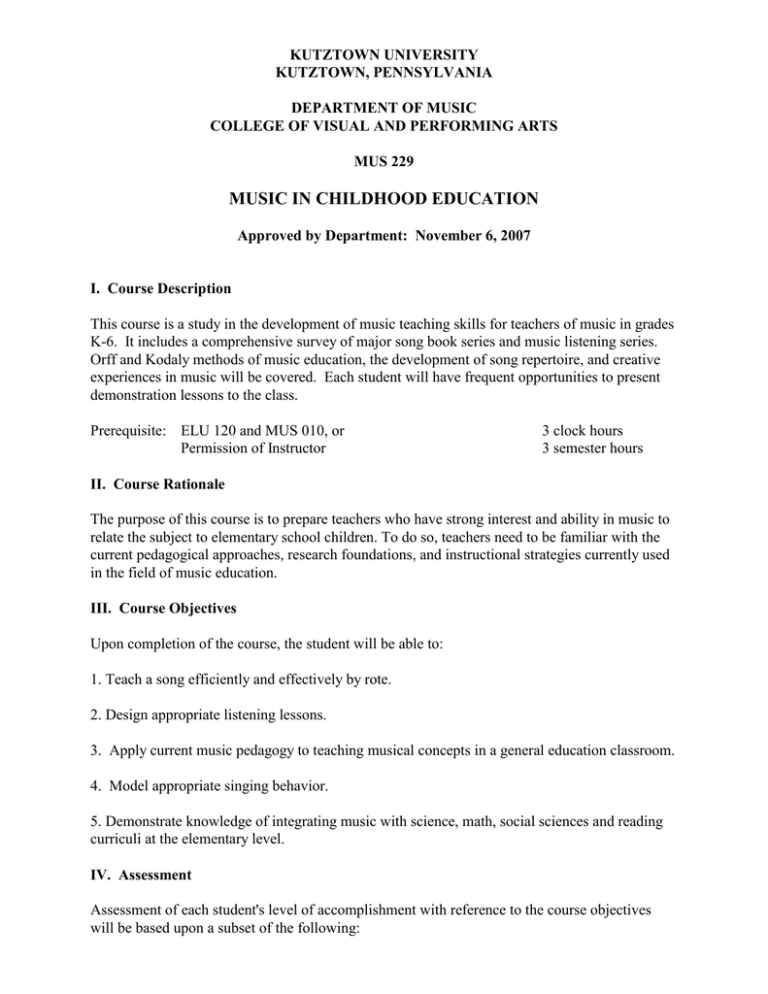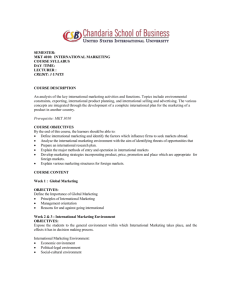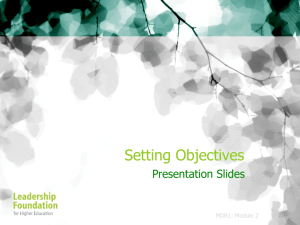KUTZTOWN UNIVERSITY KUTZTOWN, PENNSYLVANIA DEPARTMENT OF MUSIC
advertisement

KUTZTOWN UNIVERSITY KUTZTOWN, PENNSYLVANIA DEPARTMENT OF MUSIC COLLEGE OF VISUAL AND PERFORMING ARTS MUS 229 MUSIC IN CHILDHOOD EDUCATION Approved by Department: November 6, 2007 I. Course Description This course is a study in the development of music teaching skills for teachers of music in grades K-6. It includes a comprehensive survey of major song book series and music listening series. Orff and Kodaly methods of music education, the development of song repertoire, and creative experiences in music will be covered. Each student will have frequent opportunities to present demonstration lessons to the class. Prerequisite: ELU 120 and MUS 010, or Permission of Instructor 3 clock hours 3 semester hours II. Course Rationale The purpose of this course is to prepare teachers who have strong interest and ability in music to relate the subject to elementary school children. To do so, teachers need to be familiar with the current pedagogical approaches, research foundations, and instructional strategies currently used in the field of music education. III. Course Objectives Upon completion of the course, the student will be able to: 1. Teach a song efficiently and effectively by rote. 2. Design appropriate listening lessons. 3. Apply current music pedagogy to teaching musical concepts in a general education classroom. 4. Model appropriate singing behavior. 5. Demonstrate knowledge of integrating music with science, math, social sciences and reading curriculi at the elementary level. IV. Assessment Assessment of each student's level of accomplishment with reference to the course objectives will be based upon a subset of the following: 1. Completion of written assignments (lesson plans, goal planning, etc) in the approved format. 2. Completion of peer- teaching assignments meeting established criteria as a teacher. 3. Participation in peer-teaching activities as a student. V. Course Outline 1. Review of recent music series for the elementary school by the following publishers: a. Silver Burdett b. Macmillan 2. Experiences using publications for music listening in the elementary school. a. Adventures in Music b. Bowmar Orchestral Library c. Current published listening libraries d. Recordings accompanying song series. e. iTunes and other digital media 3. Current philosophies and pedagogical methods of music education. a. Kodaly b. Orff c. Dalcroze d. Suzuki 4. Planning goals, objectives and lesson plans. a. Conceptual development of rhythm, melody, harmony, form, expression and style. b. Skill development in singing, playing, listening, moving, reading and creating. 5. Frequent student demonstration lessons, reviewed by classmates and the instructor. 6. Teaching a music listening lesson in an elementary classroom. 7. Integrating music into other subjects of the curriculum. VI. Instructional Resources Anderson, W.M. and Lawrence, J.E. Integrating Music in to the Classroom. 4th ed., Belmont CA: Wadsworth, 1998. Andress, B. Music for Young Children. Forth Worth: Harcourt Brace and Co., 1998. Atterbury, B. and Richardson, C.P. The Experience of Teaching General Music. NY: McGrawHill, Inc., 1995. Bella, S. D., Peretz, I., Rosseau, L., & Gosselin, NA. Developmental study of the affective value of tempo and mode in music. Cognition, 80(3), 1-10, 2001. Bergethon, B., et al. Musical Growth in the Elementary School. 6th ed. Fort Worth: Holt, Rinehart and Winston, 1997. Bresler, L. Across music and other disciplines. Bergen, Norway: International Society for Music Education, 2002. Brophy, T. S. Assessing the developing child musician: A guide for general music teachers. Chicago, IL: G.I.A., 2000. Campbell, P.S. and Scott-Kassner, C. Music in Childhood (3rd Ed). NY: Schirmer Books, 2001. Choksy, L. The Kodaly Method: Comprehensive Music Education from Infant to Adult. 3rd ed., Englewood Cliffs NJ: Prentice-Hall, 1999 Erdei, I., Knowles, F., & Bacon, D. My Singing Bird: 150 Folk Songs from the Anglo-American, English, Scottish, and Irish Traditions. The Kodály Center of America, Inc, 2002. Flohr, J. The Musical Lives of Young Children. Englewood Cliffs, NJ: Prentice-Hall, 2004. Galineau, R.P. Experiences in Music. 3rd ed. Englewood Cliffs, NJ: Prentice Hall, 1995. Hackett, P. The Melody Book: 300 Selections from the World of Music for Autoharp, Guitar, Piano, Recorder, and Voice. 2nd ed. Englewood Cliffs NJ: Prentice-Hall, 1992. Hackett, P. and Linderman, C.A. The Musical Classroom. 3rd ed. Englewood Cliffs, NJ: Prentice-Hall, 1995. Herboly Koscár, I. Zoltán Kodály: Music Should Belong to Everyone: 120 Quotations from His Writings and Speeches. International Kodály Society, Budapest, Hungary, 2002. Landis, B. and Carder, P. Eclectic Curriculum in American Music Education: Contributions of Dalcroze, Kodaly, and Orff. Washington DC: Music Educators National Conference, 1985 Music and You. Grades K-6. NY: Macmillan Publishing Co., 2005. Music. Grades K-6. Morristown, NJ: Silver Burdett, 2005. Nye, R.E., et al. Music in the Elementary School. 6th ed. Englewood Cliffs NJ: Prentice-Hall, 1992. Orff, C. and Keetman, G. Orff-Schulwerk, Music for Children. Vol. 1-4. English adapt by D. Hall and A. Walter. Mainz, Germany: B. Schott Sohne, 1950. Raebeck, L. and Wheeler, L. New Approaches to Music in the Elementary School. 4th ed. Dubuque IA: Wm. C. Brown, Pub.1992.


